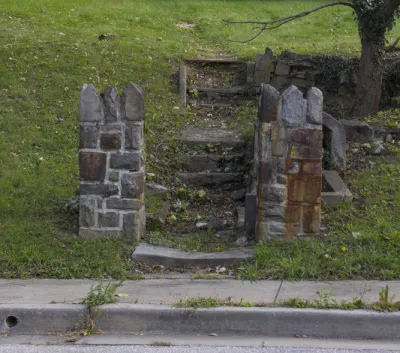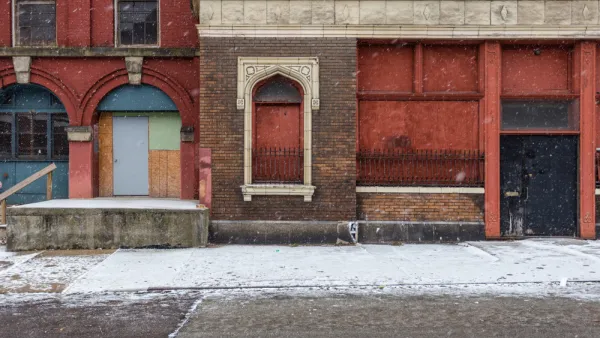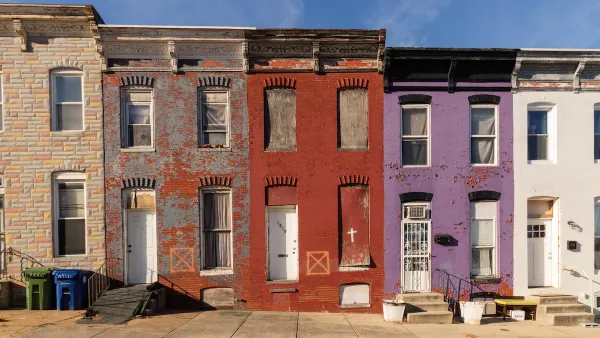As the city of Baltimore grapples with a declining population, it faces obstinate challenges in controlling the problems associated with vacant buildings, including the "vicious cycle" of vacancies causing more vacancies.

"Despite demolition crews working at an unprecedented pace in recent months to tear down Baltimore’s vacant houses, the number of abandoned buildings in the city has barely budged," reports Ian Duncan and Christine Zhang.
"Even as long rows of empty houses are being razed, other homes are going vacant much faster than officials had expected — for reasons they’re at a loss to explain."
In February, the city counted 16,724 vacant buildings in the city. Eight months later, the city counted 16,577. The city had hoped to bring that number below 15,000 by the beginning of 2020, but now it appears that goal is out of reach.
According to city data, the number of vacant buildings in neighborhoods targeted by the city demolition program has dropped, but increasing numbers of vacant buildings in other neighborhoods have kept the overall figures stagnant.
The article includes a description of the "vicious cycle" caused by vacant buildings begetting more vacant buildings, the negative effects of that cycle, and a more granular analysis of neighborhood-level demolitions and vacancies.
FULL STORY: Baltimore is furiously knocking down vacant houses — but barely keeps up as new ones go empty

National Parks Layoffs Will Cause Communities to Lose Billions
Thousands of essential park workers were laid off this week, just before the busy spring break season.

Retro-silient?: America’s First “Eco-burb,” The Woodlands Turns 50
A master-planned community north of Houston offers lessons on green infrastructure and resilient design, but falls short of its founder’s lofty affordability and walkability goals.

Delivering for America Plan Will Downgrade Mail Service in at Least 49.5 Percent of Zip Codes
Republican and Democrat lawmakers criticize the plan for its disproportionate negative impact on rural communities.

Test News Post 1
This is a summary

Test News Headline 46
Test for the image on the front page.

Balancing Bombs and Butterflies: How the National Guard Protects a Rare Species
The National Guard at Fort Indiantown Gap uses GIS technology and land management strategies to balance military training with conservation efforts, ensuring the survival of the rare eastern regal fritillary butterfly.
Urban Design for Planners 1: Software Tools
This six-course series explores essential urban design concepts using open source software and equips planners with the tools they need to participate fully in the urban design process.
Planning for Universal Design
Learn the tools for implementing Universal Design in planning regulations.
EMC Planning Group, Inc.
Planetizen
Planetizen
Mpact (formerly Rail~Volution)
Great Falls Development Authority, Inc.
HUDs Office of Policy Development and Research
NYU Wagner Graduate School of Public Service




























